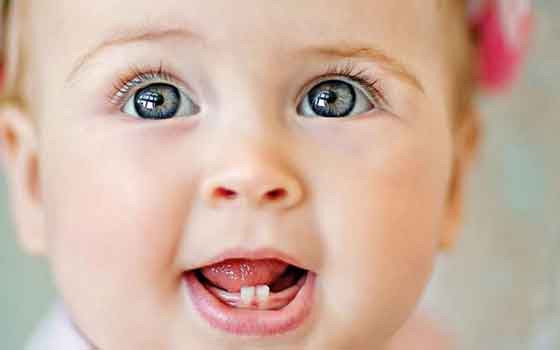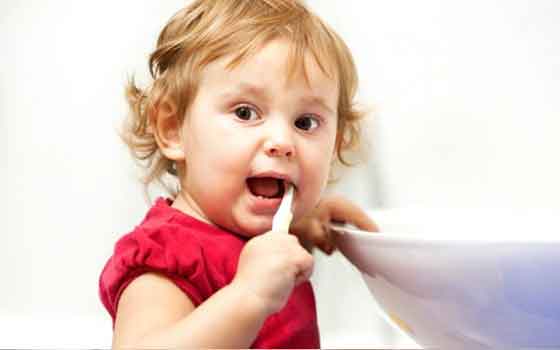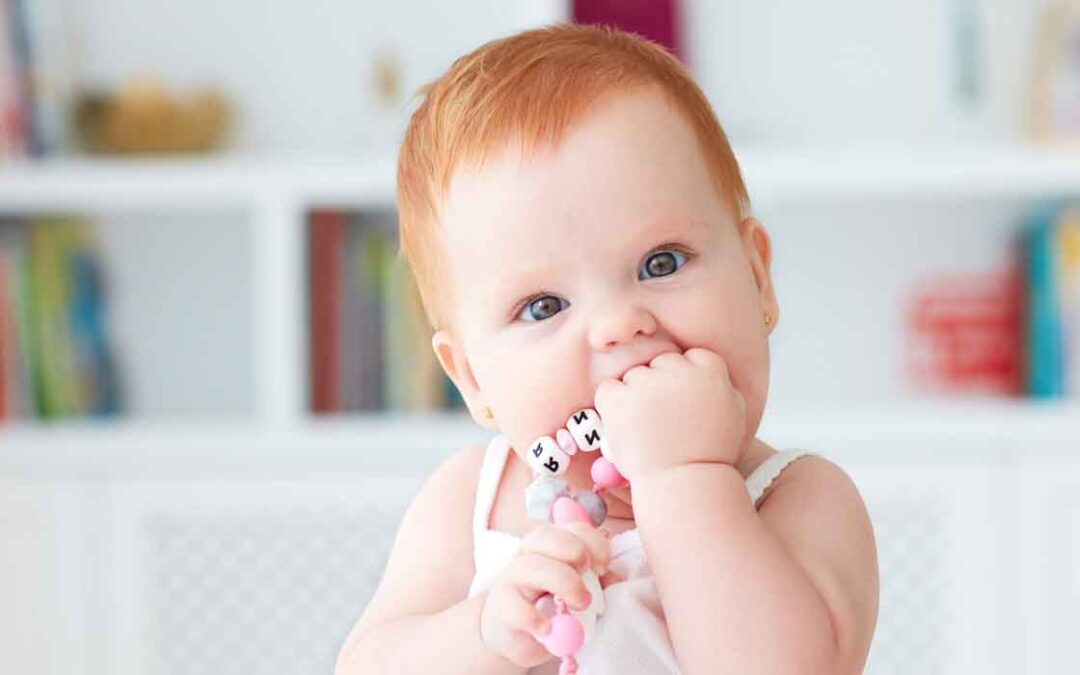Teething in babies

When your baby starts to grow, you will notice certain changes in his behavior, health, and physical appearance. One of the most common and interesting phases of a child’s growth is when he starts teething. Teething is a process in which an infant’s teeth start erupting from the gums. Also known as cutting of teeth, the process can be challenging not just for babies but for their parents as well. The process of teething usually follows with the eruption of the tooth. When we talk about time, the first tooth may appear somewhere between 4 and 10th months.
The eruption may continue for days causing a bit of discomfort to the baby and urging him to put the thing in his mouth to relax his gums.
There are various patterns of teething and many starts early while others start late. The pattern might depend on genetic factors, doctors suggest.
In certain rare conditions, a birth tooth can be seen in babies. This is called a natal tooth. Though the incidence is unique, it might be related to some other syndromes. Also, in many cases, this abnormal presence of the tooth is quite harmless. If you have observed a natal tooth in your baby, it is always wiser to connect with your pediatrician.
Typically teething in babies doesn’t cause children an excessive amount of distress. Most of the parents can tell when their baby is teething. Infants may give indications of uneasiness in the areas where the tooth is coming in, the gums around the tooth might be swollen and delicate. The baby may slobber significantly more than expected.
Though teething might sound a tough challenge, it is inevitable and can be dealt with using the following tips.
Fluoride can be added to your child’s eating routine at a half year of age.
Fluoride is a mineral that forestalls tooth rot by solidifying the lacquer of teeth. Fortunately, fluoride is frequently added to tap water. Give your baby a couple of ounces of water in a sippy or straw cup when you start providing the baby with solid food (around a half year of age). Talk with your pediatrician to check whether your faucet water contains fluoride or whether your child needs fluoride supplements. Fluoride isn’t regularly found in most filtered water. Kneading sore gums, offering something cold, or acetaminophen, on a periodic unpleasant night, can help alleviate your baby’s teething issues.
Soothing gums with fingers

Guardians can help ease Teething in babies irritation by massaging their baby’s gums with clean fingers, offering strong, not fluid-filled, teething rings or a clean solidified or a wet washcloth. In case you offer a teething roll, make a point to watch your baby while he is using the objects. Such products can sever effectively and can prompt gagging. Likewise, these teethers are not nutritious and most contain sugar and salt.
Dealing with fever
A baby’s internal heat level may marginally rise when Teething in babies; in any case, as indicated by a recent report in Pediatrics, a genuine fever (temperature over 100.4 degrees Fahrenheit or 38 degrees Celsius) isn’t related with teething and is really an indication of a disease or contamination that may require treatment. On the off chance that your baby is clearly acting differently, chat with your pediatrician about giving a weight-fitting portion of acetaminophen (e.g., Tylenol) or if the kid is more than a half year, ibuprofen (e.g., Advil, Motrin). Make a point to approach your pediatrician for the correct portion in milliliters (mL) in view of your child’s age and weight. Many children usually will have no issues at all when their teeth come in!
Avoid the use of teething tablets, gels with benzocaine, homeopathic teething gels or tablets, or golden teething pieces of jewelry.
Avoid teething tablets that contain the plant poison belladonna and gels with benzocaine. Belladonna and benzocaine are showcased to numb your child’s torment, however, the FDA has given admonitions against both because of potential symptoms. Furthermore, golden teething in babies pieces of jewelry are not suggested. Accessories put around a baby’s neck can represent a strangulation chance or be a potential gagging risk. There is likewise no examination to help the neckband’s adequacy.
You should brush your child’s teeth two times per day with fluoride toothpaste.

When your child has a tooth, you ought to brush them two times every day with a smear of fluoride toothpaste the size of a grain of rice, particularly after the last beverage or meal of the day. Mind not to put your baby to bed with a bottle in hand as it can prompt tooth rot.
When your child turns 3, the American Academy of Pediatrics (AAP), the American Dental Association (ADA), and the American Academy of Pediatric Dentistry (AAPD)recommend that a pea-sized measure of fluoride toothpaste be utilized when brushing.
At the point when your child is capable, you can allow the normal portion of toothpaste to be used. It is ideal that you should not put the normal amount of toothpaste on the toothbrush until your child is about age 6.
Guardians should screen and help their child while brushing until he or she is around 7 or 8 years of age. At the point when your child can compose their name well, he or she can start to brush on their own.
Get some information about your baby’s teeth and fluoride varnish.
During ordinary child visits, your pediatrician will check your baby’s teeth and gums to guarantee they are solid and discuss with you about how to keep them that way. The AAP and the United States Preventive Services Task Force likewise prescribe that children get fluoride varnish once they have teeth. In case your child is not seeing a dentist, inquire as to whether the person in charge of the baby can apply fluoride varnish to teeth. When your child has a dentist, the varnish can be applied in the dental office. The sooner your child gets fluoride varnish the better it will help avoid tooth rot.




